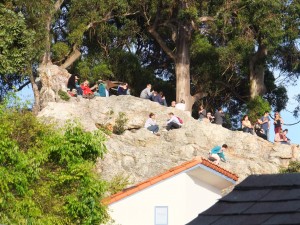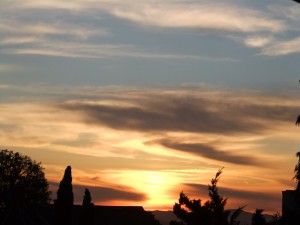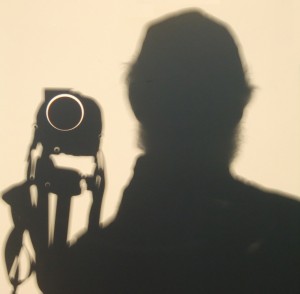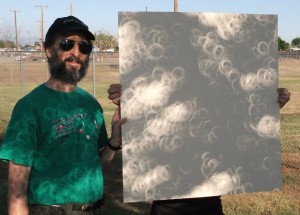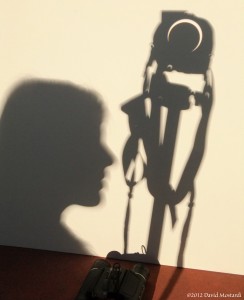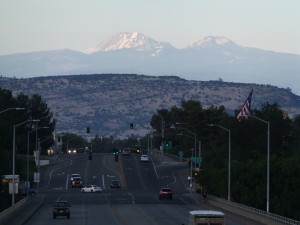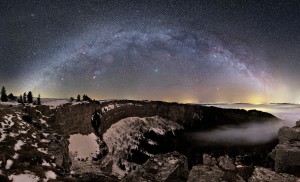When I was a teenager, one of the highlights of every month was the arrival of Scientific American magazine. I would immediately turn to Martin Gardner’s delightful column Mathematical Games. Gardner died on May 22 at the age of 95.
“I came to understand that there were thousands of people spread all around the world: mathematicians, physicists, philosophers, computer scientists, on and on, who thought of Martin Gardner’s column not merely as a feature of Scientific American, but as its very heart and soul.”
— Author Douglas Hofstadter in 1992, as quoted by Scientific American‘s Steve Mirsky in their podcast conversation of 24 May 2010
Little did I realize how many other teenagers (let alone tenured professors) shared my much-anticipated monthly pastime:
“When I came to know Martin Gardner’s column, I was probably on the order of fourteen years old… I will always remember the excitement if I went to the mailbox at my parents’ house and found that the copy of Scientific American had arrived. And I instantly flipped it open, looked to the page where Martin Gardner’s column was, went to that page, and was riveted by whatever he said, every time, without any exceptions.
“And I realized later—not at that time, perhaps many years later—that many, many, many people did exactly that, that in some sense Scientific American itself was just the wrapping for Martin Gardner’s column… It was so full of profundity and exploration of fantastic new ideas, so stimulating to people who enjoy mathematics or philosophy, the savoring of beauty and paradox mixed together, with also a wonderful dose of sense of humor.”
— Douglas Hofstadter talking with Steve Mirsky later in that same conversation
I always felt a bit guilty about ignoring most of the rest of the magazine, with its scholarly articles on quantum physics, viral genetics or nuclear detente treaties. But I shouldn’t have been: Gardner had been delighting Scientific American‘s readers since before I was born. His Mathematical Games column ran from 1956 until 1981; here I share four of them that remain particularly fresh in my memory:
- Eleusis, a card game devised by Robert Abbott. Gardner wrote about the game in October 1977; I xeroxed the column and then spent many delightful afternoons playing Eleusis, particularly at the Planina folkdance camp in the Santa Cruz mountains.
- The art of tesselations, the tiling of an infinite plane with shapes such that there are no gaps or overlaps
- A review of Douglas Hofstadter’s 1979 book Godel, Escher, Bach: An Eternal Golden Braid. Based on Gardner’s glowing review I bought the book, although many sections were quite beyond me.
- Perhaps my favorite: the April 1974 column, which contained a half-dozen remarkable new scientific discoveries, all of which turned out to be an elaborate April Fool’s Day hoax. In the podcast quoted above, Hofstadter talks about Gardner’s fascination with hoaxes, including how Gardner once wrote a pseudonymous negative review of one of his own books.
Later in high school, a friend told me about Gardner’s Annotated Alice, with its erudite and playful notes on both Alice in Wonderland and Alice Through the Looking-Glass. Gardner clearly enjoyed annotating books, and I collected several more: Oddities and Curiosities, The Annotated Casey at the Bat, and The Annotated Night Before Christmas.
For my birthday in 2000, my wife Arlene gave me Gardner’s latest book, From the Wandering Jew to William F. Buckley Jr. In it I discovered an essay entitled “John Martin’s Book: A Forgotten Children’s Magazine.” Gardner was a subscriber to John Martin’s Book in 1921 when he was seven years old. He wrote to John Martin for an autograph, who obliged saying “I rather send it to you than a king.” I was astounded and delighted by the essay: John Martin was the pen name of Morgan Shepard, the author and one-time partner of Paul Elder, the San Francisco book publisher I had been researching since the 1990s. After all these years, I suddenly had a scholarly connection to one of my favorite authors! I immediately wrote to Gardner, telling him about my research into Elder’s and Shepard’s careers, and gave him one of my Elder checklists. Although I never heard back—I knew Gardner was already in poor health, and could only imagine the mail he must have received on a daily basis—the connection satisfied me on a deep level, and is something I will hold dear throughout my life.
Here are some more tributes to Martin Gardner:


